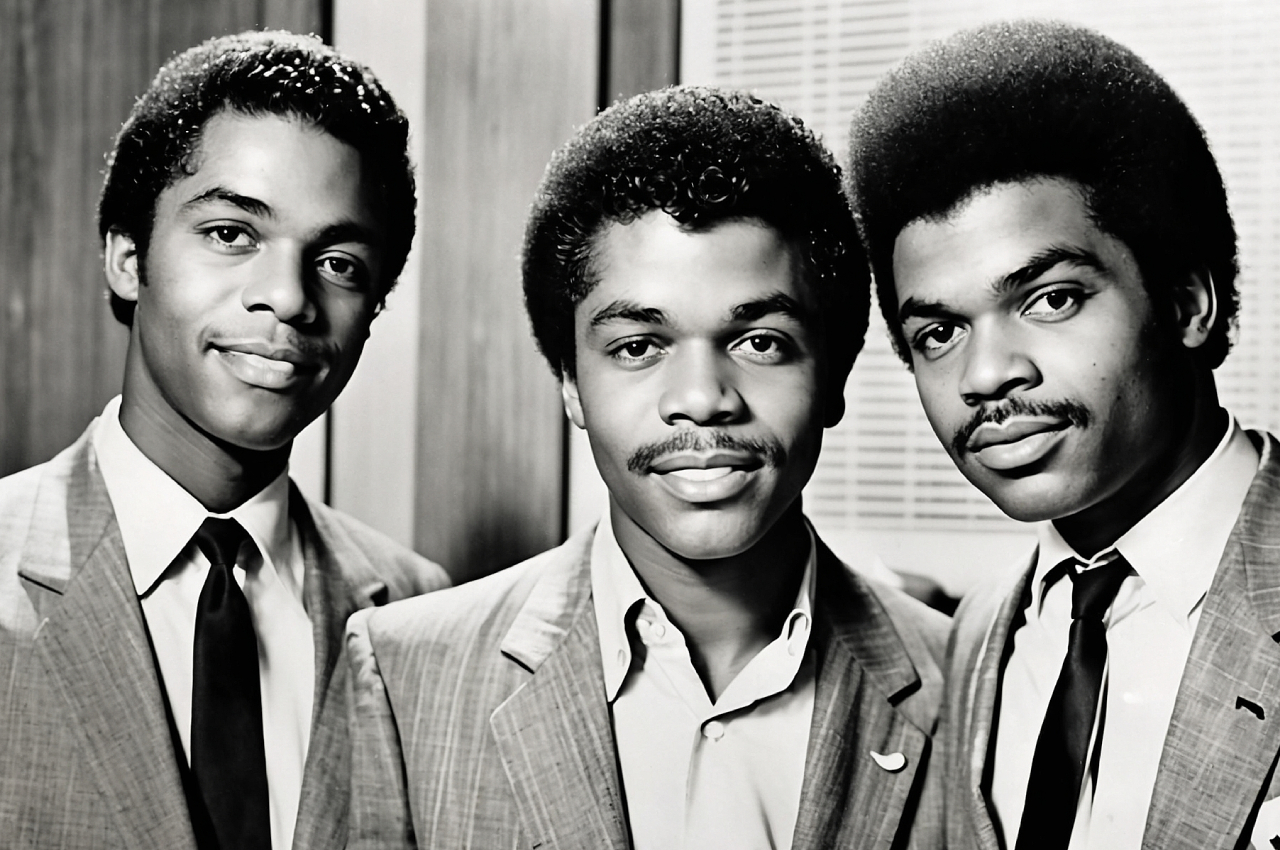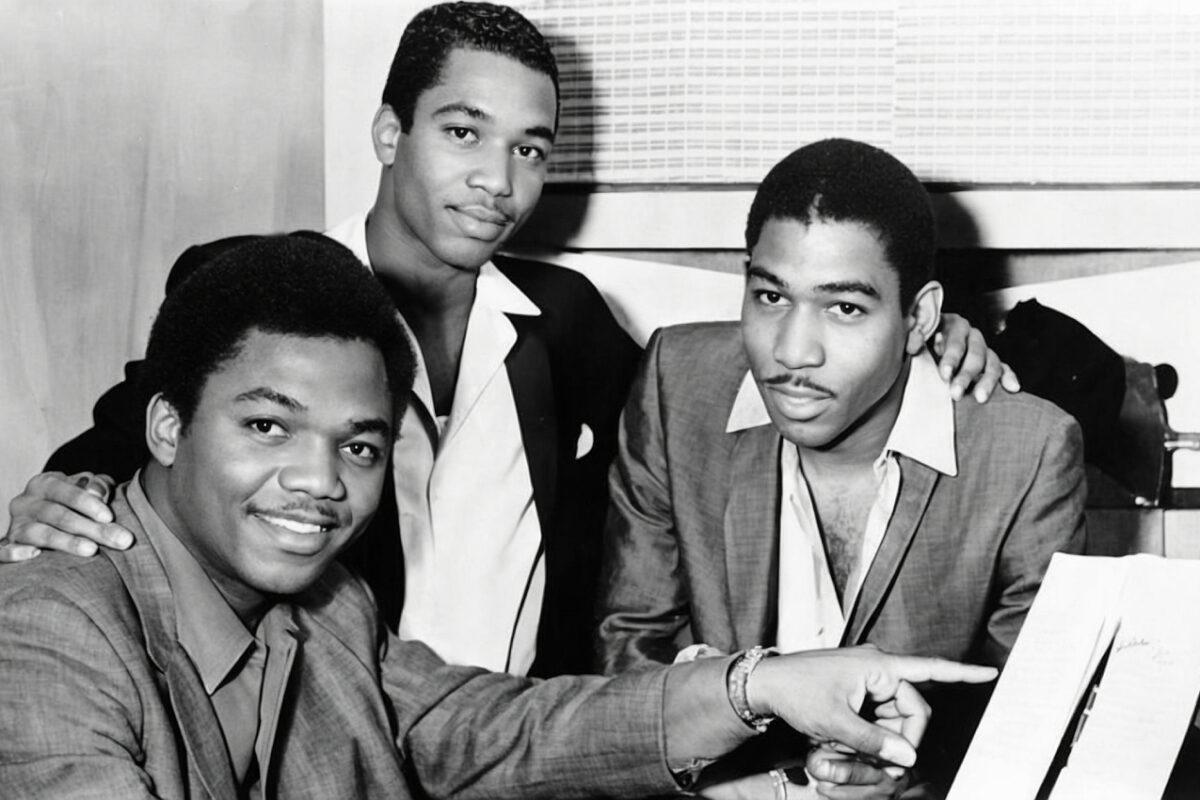The story of Holland-Dozier-Holland is one that reverberates through the annals of music history, their influence extending far beyond the bounds of Motown. As the architects of the Motown Sound, they encapsulated the hopes, dreams, and struggles of an era, turning them into melodies that continue to echo through time. The energy and emotion they infused into their work set them apart as one of the most successful songwriting and production teams in history.
The Power Trio: Who Were Holland-Dozier-Holland?
Behind the initials H-D-H were three extraordinary talents: brothers Brian and Eddie Holland, and their longtime friend Lamont Dozier. Each brought unique strengths to the table, creating a synergy that would redefine pop music.
- Brian Holland: The melodic genius
- Lamont Dozier: The innovative arranger
- Eddie Holland: The lyrical wordsmith
They each brought something unique to the table, their early lives setting the stage for the greatness that was to come. Brian Holland was born into a Detroit that was as musically vibrant as it was gritty. His early exposure to the city’s rich musical tapestry gave him an ear for melody that would later become legendary. Lamont Dozier’s roots in gospel music imbued his songwriting with a soulful depth, while Eddie Holland’s vocal prowess and lyrical insight rounded out the trio.
Before they ever set foot in a recording studio together, each member had already made tentative steps into the music industry. Brian and Eddie had both tried their hands at performing, with Brian recording a few unsuccessful singles and Eddie making a name for himself as a solo artist. Lamont, meanwhile, was cutting his teeth as a songwriter. It was this blend of ambition and raw talent that would eventually bring them together.
1. How did Holland-Dozier-Holland meet?
The trio met at Motown Records in the early 1960s, where they quickly recognized their complementary talents and formed a partnership that would change music history.
Crafting the Motown Sound
Holland-Dozier-Holland were not just songwriters; they were sound architects. They played a pivotal role in defining what would become known as the “Sound of Young America,” a style characterized by its infectious rhythms, lush orchestration, and emotionally resonant lyrics. Their approach to songwriting was methodical yet intuitive, blending technical skill with an innate understanding of what would resonate with listeners.
Their collaboration with Motown’s in-house musicians, often referred to as The Funk Brothers, was crucial in bringing their vision to life. Together, they crafted songs that were both polished and raw, capturing the complexities of human emotion with a simplicity that was deceptive.
2. What made the Motown sound unique?
The Motown sound combined infectious rhythms, memorable hooks, and polished production to create music that appealed to both black and white audiences, helping to bridge racial divides through music
Major Hits That Shaped a Generation
One cannot discuss Holland-Dozier-Holland without mentioning the iconic songs that have become ingrained in the cultural fabric. “Where Did Our Love Go,” performed by The Supremes, was a game-changer, marking the beginning of a string of hits that would dominate the charts. The song’s minimalist production, coupled with Diana Ross’s plaintive vocals, struck a chord with audiences worldwide.
Following closely on its heels was “Baby Love,” another Supremes hit that cemented their status as Motown’s leading act. The song’s infectious melody and upbeat rhythm belied the heartache in its lyrics, a trademark of Holland-Dozier-Holland’s style. Then came “Reach Out I’ll Be There” by The Four Tops, a powerful anthem that combined soulful urgency with a message of hope and reassurance. These songs, along with many others, became the soundtrack of a generation, shaping the musical landscape of the 1960s.

3. How long did it take Holland-Dozier-Holland to write a song?
While the time varied, the team was known for their efficiency. They could often complete a song in a single day, from initial idea to finished product. Here some notable work:
1963
The Miracles – “Mickey’s Monkey”
Martha and the Vandellas – “Heat Wave”
1964
The Supremes – “Where Did Our Love Go”
Martha and the Vandellas – “Dancing in the Street”
1965
The Supremes – “Stop! In the Name of Love”
The Supremes – “Back in My Arms Again”
Four Tops – “I Can’t Help Myself (Sugar Pie Honey Bunch)”
The Supremes – “I Hear a Symphony”
1966
Four Tops – “It’s the Same Old Song”
The Supremes – “You Can’t Hurry Love”
The Supremes – “You Keep Me Hangin’ On”
1967
Four Tops – “Reach Out I’ll Be There”
The Supremes – “Love is Here and Now You’re Gone”
The Supremes – “The Happening”
Martha and the Vandellas – “Jimmy Mack”
1968
Four Tops – “Bernadette”
Diana Ross & the Supremes – “Reflections”
Marvin Gaye & Tammi Terrell – “Ain’t Nothing Like the Real Thing”
1969
Diana Ross & the Supremes – “Love Child”
Marvin Gaye – “Too Busy Thinking About My Baby”
4. What was Holland-Dozier-Holland’s most successful song?
While it’s difficult to choose just one, “I Hear a Symphony” by The Supremes is often cited as their crowning achievement, perfectly encapsulating their songwriting and production prowess.
Behind the Studio Doors
The recording studio was where Holland-Dozier-Holland’s ideas came to life. It was a space of creativity, collaboration, and sometimes conflict. The trio worked closely with musicians, engineers, and artists to ensure that their vision was realized in the final product.
The process was not always smooth. There were challenges in translating their ideas into sound, and there were moments of doubt and frustration. However, these struggles often led to breakthroughs, resulting in the timeless tracks we know today.
The Breakup: Creative Differences and Legal Battles
Despite their immense success, Holland-Dozier-Holland’s partnership was not immune to the pressures of fame and fortune. By the late 1960s, tensions began to rise, fueled by creative differences and disagreements over royalties. The situation culminated in a legal battle with Motown, leading to the trio’s departure from the label.
The breakup marked the end of an era, but it also set the stage for new beginnings. While the legal battles were draining, they also underscored the value of Holland-Dozier-Holland’s contributions to the music industry.
By the early 1970s, the trio had left Motown due to disputes over royalties and formed their own labels, Invictus Records and Hot Wax Records. While they continued to produce and write songs in the 1970s, their work during this period did not achieve the same level of widespread recognition as their Motown hits. But those tracks are Funkologie’s favourites!
1969
Freda Payne – “The Unhooked Generation” (Invictus Records)
1970
Chairmen of the Board – “Give Me Just a Little More Time” (Invictus Records)
Freda Payne – “Band of Gold” (Invictus Records)
The Honey Cone – “Want Ads” (Hot Wax Records)
1971
The Honey Cone – “Stick-Up” (Hot Wax Records)
Chairmen of the Board – “Pay to the Piper” (Invictus Records)
1972
Laura Lee – “Rip Off” (Hot Wax Records)
1973
The Honey Cone – “One Monkey Don’t Stop No Show” (Hot Wax Records)
Freda Payne – “Bring the Boys Home” (Invictus Records)
Conclusion: The Timelessness of Holland-Dozier-Holland
Holland-Dozier-Holland’s impact on popular music cannot be overstated. Their ability to consistently create hits that spoke to the human experience while pushing the boundaries of popular music production set a new standard in the industry. As we continue to enjoy their timeless classics, we’re reminded of the power of collaboration, creativity, and the enduring magic of a perfectly crafted pop song. The legacy of Holland-Dozier-Holland serves as an inspiration to aspiring songwriters and producers, proving that with talent, hard work, and a little bit of soul, it’s possible to create music that truly stands the test of time.
5. How many number-one hits did Holland-Dozier-Holland write?
Holland-Dozier-Holland wrote an impressive 25 number-one hit singles, cementing their status as one of the most successful songwriting teams in music history.
Related Links:
The Heart of the machine
Move With the Groove – The Heartbeat Of The World

